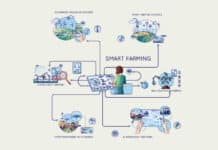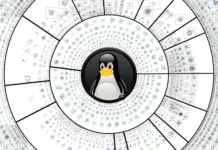Started in March 2009, Carnation Auto—a multi-brand automobile sales and services network set up by the former MD of Maruti Suzuki, Jagdish Khattar—offers car owners a wide array of services covering servicing, mechanical repairs, body repairs, accessories, insurance, pre-owned cars, car customisation solutions, etc. From rectifying scratches and bumps, to transforming off-the-assembly-line cars into one-of-a-kind attention-grabbers with accessories, Carnation has grown to 15 hubs across 10 cities, with more than 700 employees —all in a matter of nine months.

This accelerated growth wouldn’t have been possible without open source technology. The firm adopted Red Hat Enterprise Linux Advanced Platform to run its business critical SAP ERP suite. The open source platform additionally helped it achieve integrated virtualisation on the HP ProLiant BL460c G6 server.
“When we started operations in 2009, we wanted to offer the customer a wide array of six to seven services, including mechanical servicing, body and paint work, CNG/LPG retro fitments, customisation, accessories, financing and insurance. To ensure a consistent and high-quality customer experience, we needed seamless automation but at a low cost. An accelerated rollout and rapid scalability of our services was critical for early success. Thus, we chose Red Hat Enterprise Linux Advanced Platform,” says Mohit Agarwal, chief information officer, Carnation Auto.
Open source gear
Implementing open source technology was not easy. The intensive lifecycle management that Carnation wished to provide to its customers demanded a centralised IT system that would be a single window to address the various needs of multiple stakeholders (customers, business partners and employees). For this, the company chose the SAP business suite.
The simplicity in managing the infrastructure, scalability and performance compatibility of the SAP business suite and HP ProLiant servers, coupled with low cost solutions, led to the decision to go for open source technology. “We considered a number of operating systems as the platform for our business-critical SAP applications, and selected Red Hat Enterprise Linux Advanced Platform because it provided the best overall value, stability and performance,” says Agarwal.
On the fast track
There has been no looking back since then. Open source technology helped Carnation reduce costs, improve the performance of the IT infrastructure and achieve scalability, thereby propelling the firm onto the fast track.
Carnation Auto went live with SAP about four months back and has achieved a good performance from SAP’s business suite atop Linux. Today, the firm has 15 live sites, with 400 users. So far, it has used only 10 per cent of its server capacity.
“We are a distributed business. The final performance of SAP depends on multiple factors, of which one is the platform. With open source, we haven’t had any performance issues despite the number of users increasing to 400 today. Not an hour of user productivity in terms of system downtime has been lost ever since we implemented the solution,” testifies Agarwal.
Response time is also critical to a system that is partly exposed to customers, as any performance delay would adversely affect the customers’ confidence in the solution. “For our customers, the Carnation experience should never be dented. Linux allows the SAP business suite to aggregate information across domains, and it enables a customer-facing front-end that performs like a retail operation,” adds Agarwal.
SAP’s commitment to Linux as a long-term strategic and supported platform for customers worldwide also assured Carnation a solution with end-to-end support—from the hardware to the OS, and through to the business applications.
Further, Linux is highly scalable, which complements Carnation’s growth plans. “We wish to open 100 hubs in the next three years and increase our user base on SAP to over 3,000 users. We are confident of Linux having the ability to help us achieve such scalability. Today, we can see ourselves grow ten times on the same platform without any issues, with Linux guiding our vision of transforming the automobile
industry,” says Agarwal.
Low on cost
Open source technology was also easy on the pocket for Carnation. A large portion of the cost savings resulted from the elimination of exaggerated software licensing fees. “Our estimates show that cost benefits are likely to exceed 50 per cent compared to proprietary platforms,”
said Agarwal. Further, Carnation hopes to achieve a lower total cost of ownership through open source because security is inherent to the platform (and not additional licensing baggage), aided by quick deployment that is crucial for a business where time is money. “We are looking at over 30 per cent cost savings from IT investments in Red Hat solutions over the next five years,” says Agarwal.
Many critics, however, might claim that maintenance costs of an open source platform might squash these dreams. But Carnation’s experience of a customer facing an enterprise system on the Linux platform speaks otherwise. “By opting for Tata Consultancy Services (TCS) to
provide end-to-end system integration services through a multi-year agreement for an enterprise IT solution, we ensured no hitches in the maintenance of our IT system. We have raised a couple of tickets but there have been no major hitches so far,” says Agarwal.
Additionally, RHEL Advanced Platform with integrated virtualisation enabled Carnation to quickly virtualise servers for testing and development, and try new features in-house before deploying them on customer-facing applications. “The open source platform allowed us to increase the utilisation of servers without increasing the number of servers to be deployed. Red Hat came with the ability to move within virtual machines, on-the-fly, without any performance deterioration,” says Agarwal. “The compatibility of SAP with Red Hat, and Red Hat with the HP servers, worked very well for us. It helped meet the increasing demands of the business, enhanced process efficiencies, and led to rapid growth.” he adds.
The road ahead!
Looking ahead, Carnation hopes to deploy open source on its existing desktops. “We have about 20 desktops per hub. We are looking at an open source desktop platform in these hubs in about a year. We are looking at tremendous cost savings, and the easy management of front-end users’
systems, which are like points of sale,” quips Agarwal. It sure is life on the fast lane for Carnation!
















































































I’ve recently started a blog, the information you provide on this site has helped me tremendously. Thank you for all of your time & work.
Wow this is a great resource.. I’m enjoying it.. good article
An fascinating discussion is worth comment. I think that it is best to write extra on this subject, it might not be a taboo topic however generally people are not sufficient to talk on such topics. To the next. Cheers